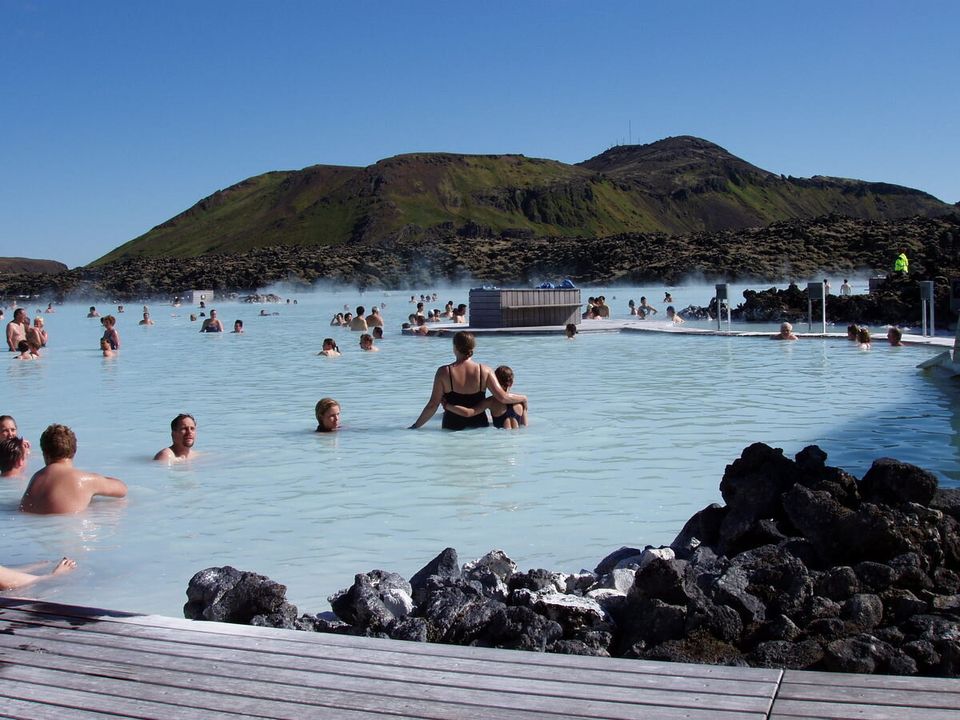
It's a frustrating dilemma. The sun is shining, the air is warm, and the time is perfect for a swim at the beach. But, upon arrival, the red flags are flying; the water is unsafe due to high bacterial counts. The anticipated joys of catching waves along with the rays are quashed and you are left with a combination of disappointment and even anger.
The link between swimming and infection has been known since the 1950s although the practice of testing recreational waters was only recommended some 40 years ago. Back in 1976, the United States Environmental Protection Agency (EPA) realized there was an infection risk to swimmers due to the presence of harmful bacteria, such as E. coli and bacteria traditionally found in poop -- fecal coliforms. Although constant, low level contact is considered beneficial to our immune systems, exposure to these higher numbers particularly in the gastrointestinal tract could take away the positive effects and leave you ill.
By 1999, testing was widespread in the U.S. and eventually adopted by other countries. Public health officials felt confident the number of infections due to swimming would be reduced and bathers worldwide would be safe. But there was still a question left unanswered: what caused these waters to become unsafe intermittently as opposed to constantly or not at all?
The presence of potential pathogens in our waters has been known for quite some time. The practice of dumping sewage or reclaimed wastewater has become commonplace and know to lead to microbial pollution. Runoff from agriculture can also leave higher levels of bacteria in the water. Yet, despite all the apparent contamination, for the most part, the water quality off beaches and other recreational waters was tested to be safe.
The answer came in 1977, when a Texas team of researchers realized where the bacteria went. The group studied the microbiological quality of different water sources in the hopes of finding the mysterious missing bacteria. Apparently, the microbes did not stay in the water but rather headed straight into the sediment where they found a nice solid matrix to grow. Thanks in part to the flow of water above and the dynamic nutrient matrix below, the bugs could develop mass colonies, known as biofilms. With little disturbance, they would live happily and never pose a threat.
This also helped to narrow down the cause for beach closures: sediment disruption. No one needed any studies to point the finger directly at Mother Nature. In river ecology, nothing shakes things up more than rainfall and as such, the general consensus became: rain today, beach closed tomorrow.
The theory held tight until 2012 when an international team looked at the effects of rainfall on the microbiological quality of the infamous Rio Grande de Arecibo. Unfortunately, the results were mixed. While they found rainfall did happen to increase the population of bacteria in the water over 24 hours, they could not find all the pathogens expected. Even more strange was how a good dousing actually helped to keep the water safer by diluting out some pathogens, particularly after 48 hours.
The results were at odds with consensus dogma leaving the authors to question whether rain and poor water quality was truly linked or if this was a cherry-picking exercise. While they could not dispute the rise in bacteria, they could not confirm the risk to health based on rain. There might have been something else at play, such as the density of solids in the water -- turbidity -- or the dynamics of the seasons or even the nature of the bacteria themselves.
Last week, a team of researchers from Sweden answered these questions by conducting a retrospective analysis at one of their own water sources, the Göta Älv. Using data from 2004-2010, the group examined the links between water quality and a number of parameters, including rainfall, seasonal patterns, turbidity, water flow and the presence of certain bacteria in the water, such as E. coli, fecal coliforms and Clostridium. This latter analysis was done to determine if the bacteria themselves could cause poor water quality without any environmental involvement.
Amid all the data, one conclusion became clear: the problem was the rain. Over the entire six-year period, only rainfall had any decent link with poor water quality. The data also showed the problems were worse not one, but two days after a significant rain event. This was as a consequence of the bacteria having the opportunity to deal with the turbulence, acclimatize, and then get back to growing en masse.
There was another issue not previously seen although continually hinted at in the environmental realm. Over the years, there were significantly more rainfall events, many of which were severe. The authors hinted this was a consequence of climate change and suggested the situation may get worse in the future. However, there were no actual studies to confirm the case.
Although the results reveal a rainy day may lead to two days of misery for water-seekers, there is a silver lining. The studies all showed water quality usually returned to normal within four to six days and in some cases was even more pristine. Granted, the idea of having to plan a week around the weather may be more pain than pleasure. Yet, to enjoy all the other benefits of summer fun, it's best to stay prepared so that you can stay happy outside and not sick in bed.
ALSO ON HUFFPOST:
